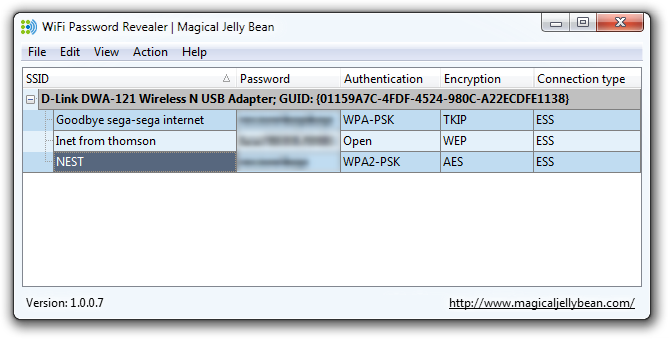Generate Private Key For Signature Java
Posted : admin On 30.05.2020In order to be able to create a digital signature, you need a private key. (Its corresponding public key will be needed in order to verify the authenticity of the signature.)
- Generate Private Key For Signature Java Windows 10
- Generate Private Key For Signature Java Free
- Generate Private Key For Signature Java Free
In some cases the key pair (private key and corresponding public key) are already available in files. In that case the program can import and use the private key for signing, as shown in Weaknesses and Alternatives.
A self signed certificate is that the issuer of the certificate is the subject of the certificate, i.e, you sign your own certificate with your own private key. In Java, there is a class named CertAndKeyGen which can be used to generate keys and certificates. Generate a pair of keys, and provide access to them. (Java) RSA SHA256 Signature using Private Key from Java Keystore. Signs plaintext using RSA SHA256 using a key from a Java keystore. Duplicatest this code.
In other cases the program needs to generate the key pair. A key pair is generated by using the KeyPairGenerator class.
In this example you will generate a public/private key pair for the Digital Signature Algorithm (DSA). You will generate keys with a 1024-bit length.
Generating a key pair requires several steps:
Create a Key Pair Generator
The first step is to get a key-pair generator object for generating keys for the DSA signature algorithm.
As with all engine classes, the way to get a KeyPairGenerator object for a particular type of algorithm is to call the getInstance static factory method on the KeyPairGenerator class. This method has two forms, both of which hava a String algorithm first argument; one form also has a String provider second argument.
A caller may thus optionally specify the name of a provider, which will guarantee that the implementation of the algorithm requested is from the named provider. The sample code of this lesson always specifies the default SUN provider built into the JDK.
Put the following statement after the
line in the file created in the previous step, Prepare Initial Program Structure:
Initialize the Key Pair Generator
The next step is to initialize the key pair generator. All key pair generators share the concepts of a keysize and a source of randomness. The KeyPairGenerator class has an initialize method that takes these two types of arguments.
The keysize for a DSA key generator is the key length (in bits), which you will set to 1024.
The source of randomness must be an instance of the SecureRandom class that provides a cryptographically strong random number generator (RNG). For more information about SecureRandom, see the SecureRandom API Specification and the Java Cryptography Architecture Reference Guide .
The following example requests an instance of SecureRandom that uses the SHA1PRNG algorithm, as provided by the built-in SUN provider. The example then passes this SecureRandom instance to the key-pair generator initialization method.
Some situations require strong random values, such as when creating high-value and long-lived secrets like RSA public and private keys. To help guide applications in selecting a suitable strong SecureRandom implementation, starting from JDK 8 Java distributions include a list of known strong SecureRandom implementations in the securerandom.strongAlgorithms property of the java.security.Security class. When you are creating such data, you should consider using SecureRandom.getInstanceStrong(), as it obtains an instance of the known strong algorithms.
Generate the Pair of Keys
The final step is to generate the key pair and to store the keys in PrivateKey and PublicKey objects.
The code snippet below show you how to use the JDK Security API to generate public and private keys. A private key can be use to sign a document and the public key is use to verify that the signature of the document is valid.
Generate Private Key For Signature Java Windows 10
The API we use to generate the key pairs is in the java.security package. That’s mean we have to import this package into our code. The class for generating the key pairs is KeyPairGenerator. To get an instance of this class we have to call the getInstance() methods by providing two parameters. The first parameter is algorithm and the second parameter is the provider.
The maximum key strength in WEP is pretty good, too-256 bits and 58 characters-but WEP isn't recommended for nonlegacy installations.  Buttons labeled Copy, Save, and Generate key the program's functions.
Buttons labeled Copy, Save, and Generate key the program's functions.
After obtaining an instance of the key generator we have to initialize it. The initialize() method takes two parameters, the key size and a source of randomness. We set the key size to 1024 and pass and instance of SecureRandom.
Generate Private Key For Signature Java Free

Finally to generate the key pairs we call the generateKeyPair() method of the KeyPairGenerator class. This will return a KeyPair object from where we can get the PrivateKey and PublicKey by calling the getPrivate() and getPublic() method.
Let’s see the code snippet below:
Generate Private Key For Signature Java Free
- How do I backup MySQL databases in Ubuntu? - December 16, 2019
- How do I set the time of java.util.Date instance to 00:00:00? - October 24, 2019
- How to Install Consolas Font in Mac OS X? - March 29, 2019